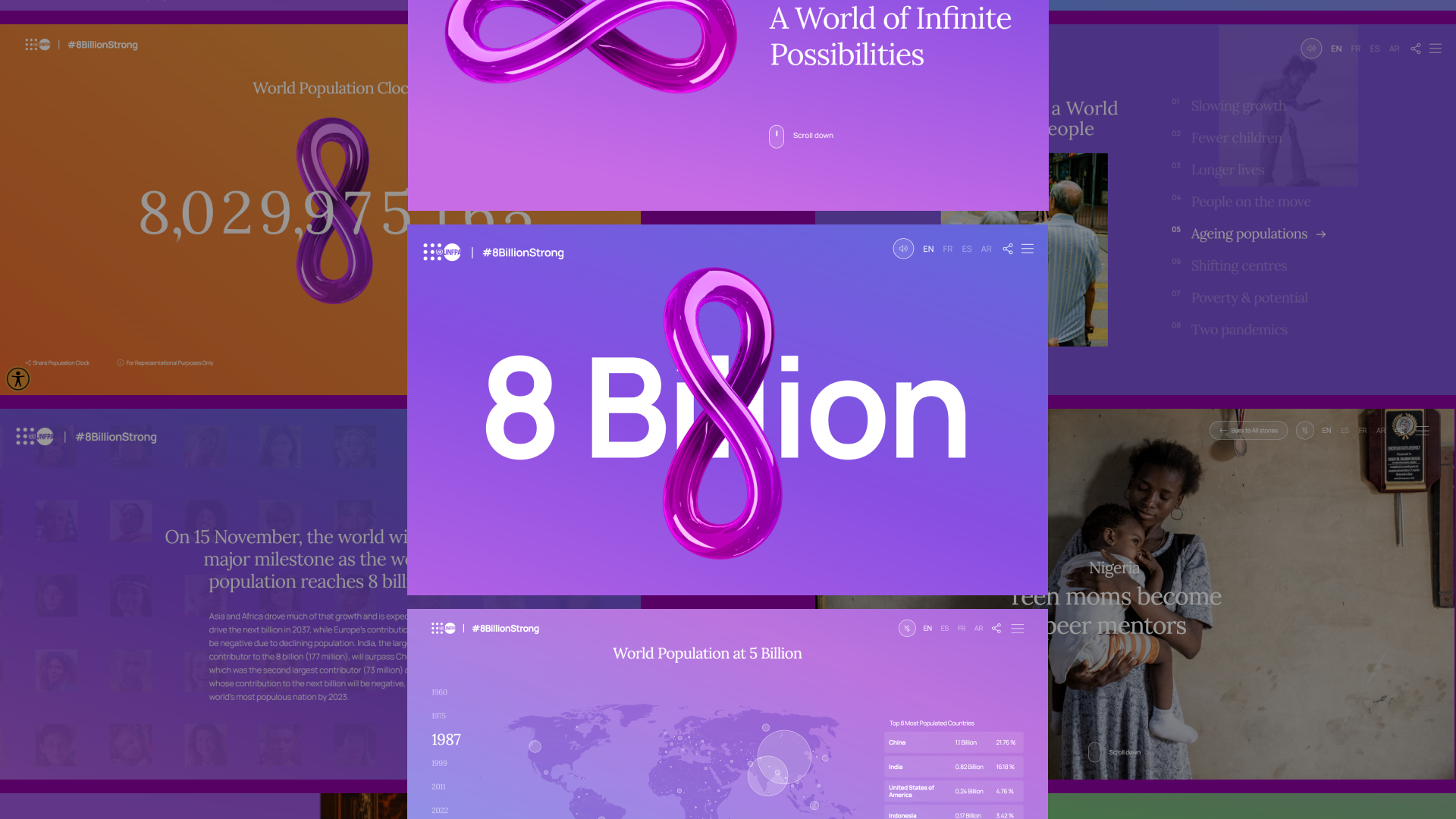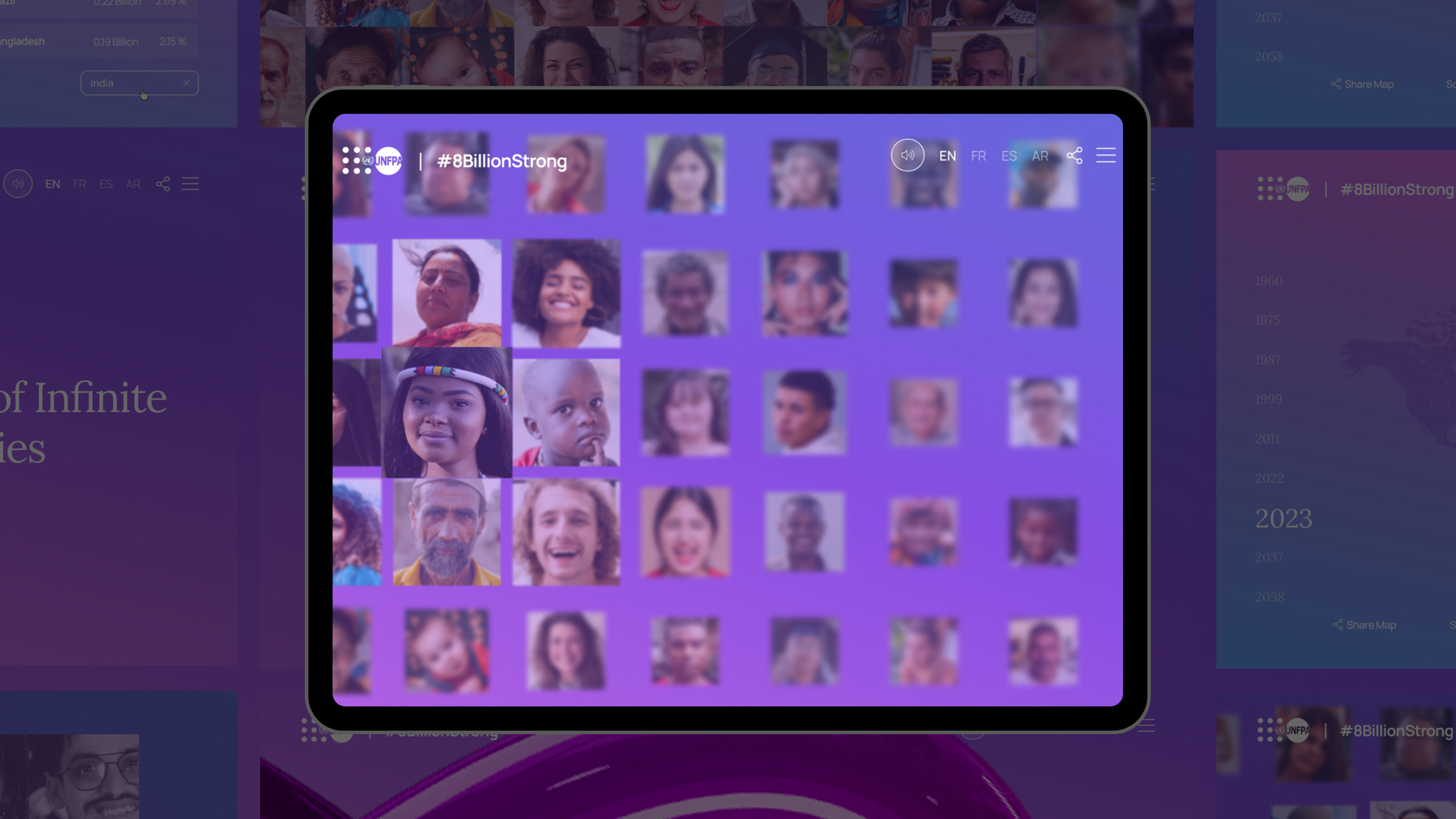
UNFPA
8 Billion: A World of Infinite Possibilities
We are #8BillionStrong
8 Billion: A World of Infinite Possibilities
We are #8BillionStrong
General Websites and Mobile Sites /
Honoree
The number of people is not the problem — people are the solution.UNFPA

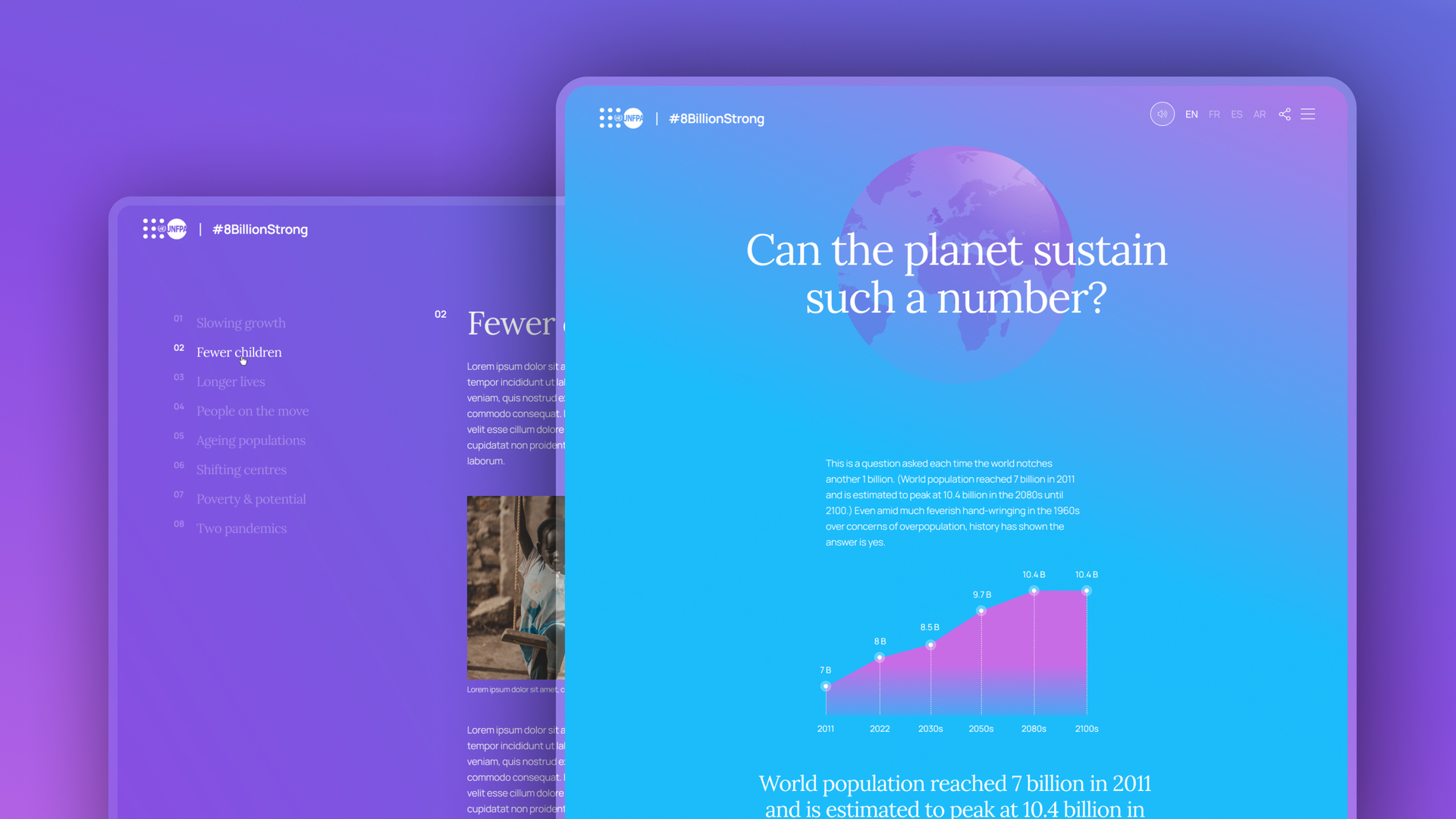
Q: Once you settled on your idea, what influenced your decision on the chosen technical approach? How did it differ or go beyond approaches you’ve taken in the past?
A: There are two ways to tell the story of 8 billion — through numbers and through individuals. In our project, we do both. We map population growth and define trends using animated graphs and charts, and we introduce readers to women around the world — from “granfluencer” Eriko Yagi in Japan to Ukrainian refugee Ludmila Vashkevych in Poland — telling their powerful personal stories in both words and images by female Magnum photographers.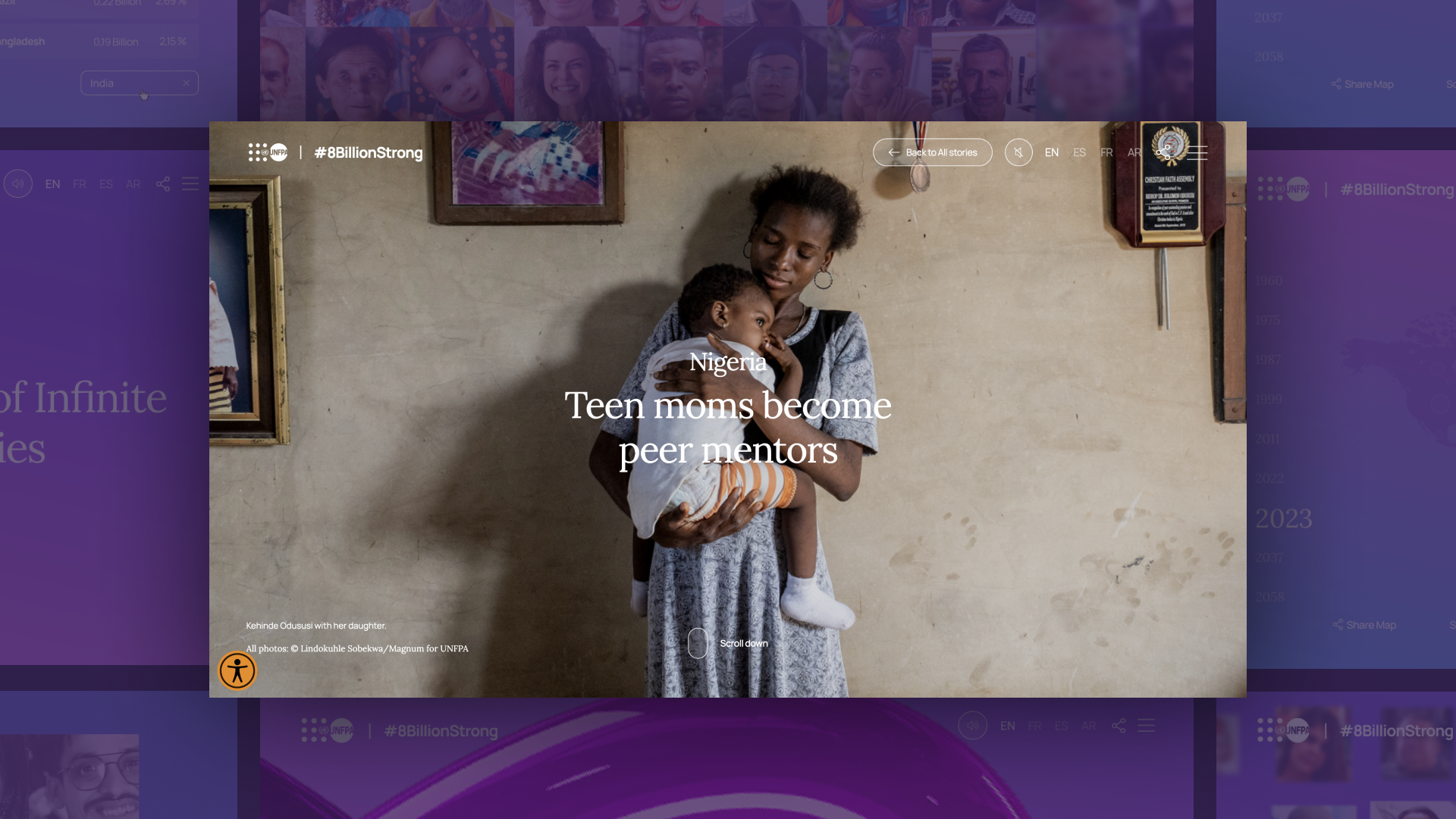
Q: What were some of your biggest learning and takeaways from this project?
A: Flip the number “8” on its side, and you have the symbol for infinity (∞). It’s the ideal symbol for our project, as we have infinite possibilities in a world of 8 billion. Together, we have the power to shape our common futures. And by protecting individual rights, we can unlock the unlimited potential of people around the world to address the challenges facing their own societies, as well as the global problems imperiling us all.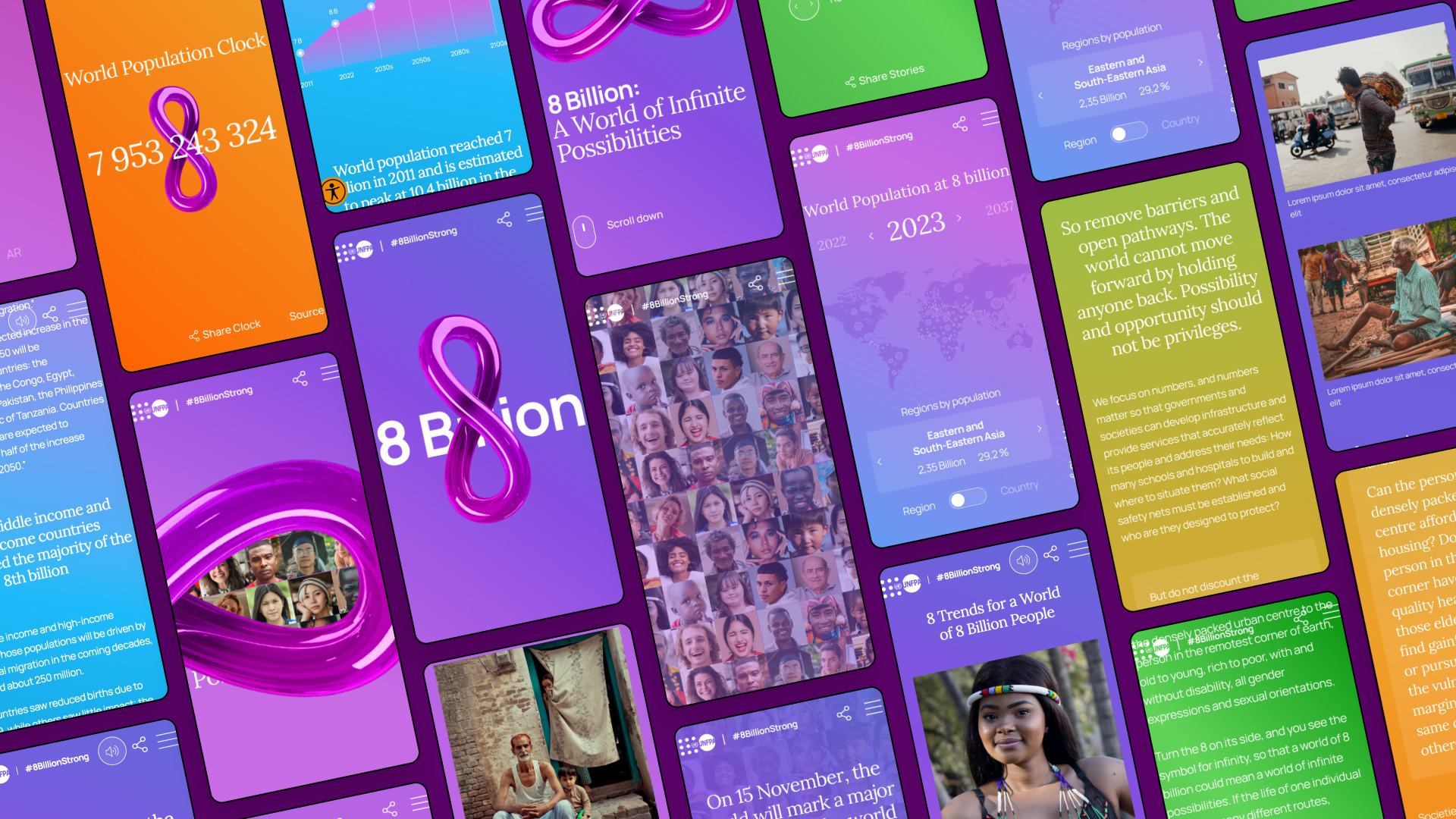
Q: What web technologies, approaches, tools, or resources did you use to develop this experience (WordPress, headless, AI, Sublime Text, HTML5, Adobe XD, etc)?
A: The design agency Elkanodata used Visual Studio as an integrated development environment with Github Copilot, and for the front-end programming, used HTML5, SCSS, Swiper.js, and Plain JavaScript, which was integrated into a Drupal content management system. These approaches ensured an immersive, cutting-edge result that was inclusive of the global population we want to reach (for instance, working with lower bandwidths or older browsers).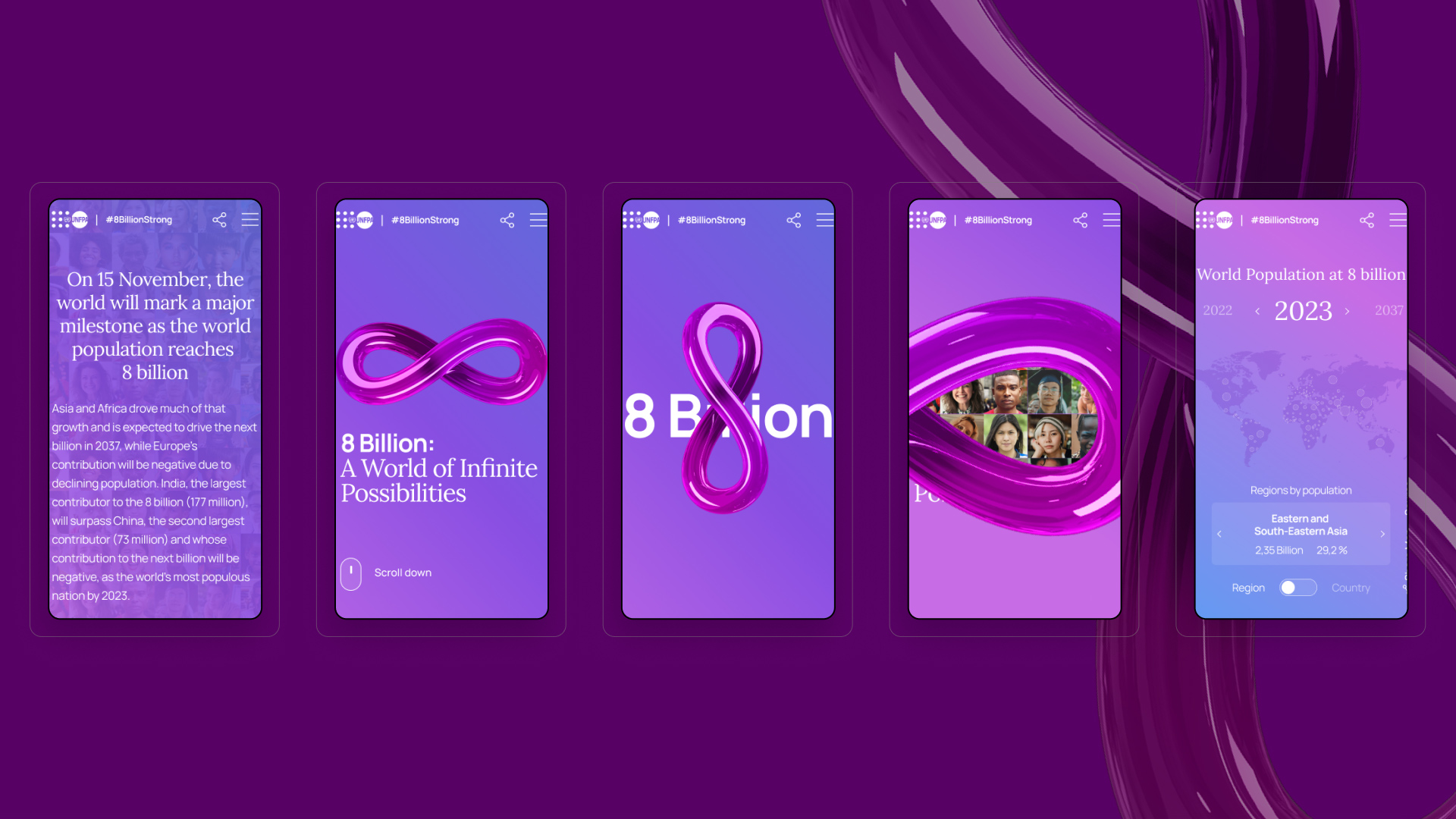
Q: How did the final product meet or exceed your expectations? What results did you see?
A: Through many rounds of brainstorming and problem solving, as well as collaborations among teams of editors, photographers, designers, and developers, we were able to transform a historic global milestone into a powerful, colorful, and diverse digital narrative about this moment in history.
Q: Why is this an exciting time to create new digital experiences? How does your team fit into this?
A: Digital experiences offer endless opportunities to connect with people across the globe in new ways. One way we did so is to partner with artist Cecilie Waagner Falkenstrøm to create the dynamic collection of artwork titled “Stronger Together.” Developed using an artificial intelligence algorithm that recognized patterns in the thousands of images sourced from our digital photo archive, it intimately portrayed people from around the world.